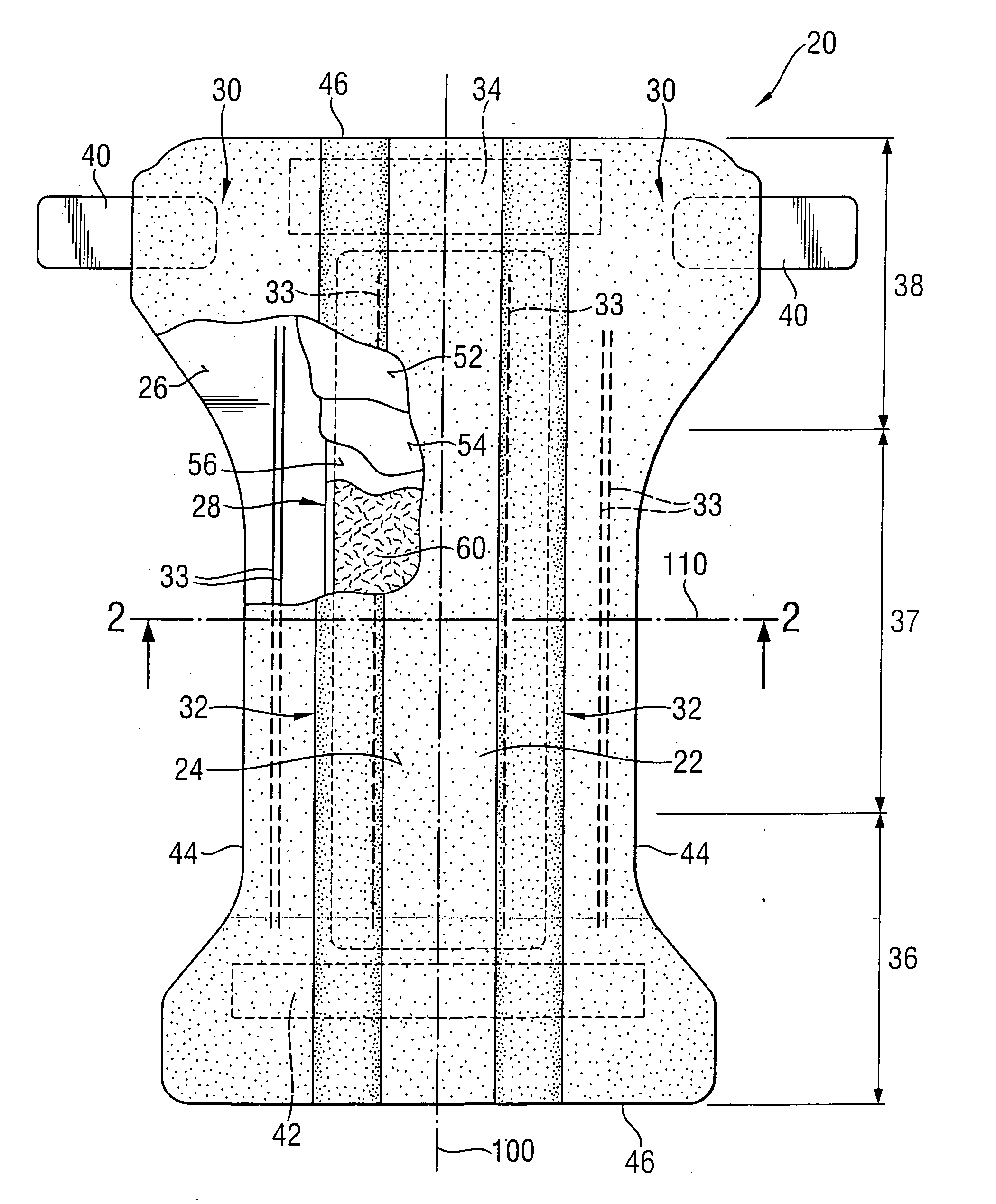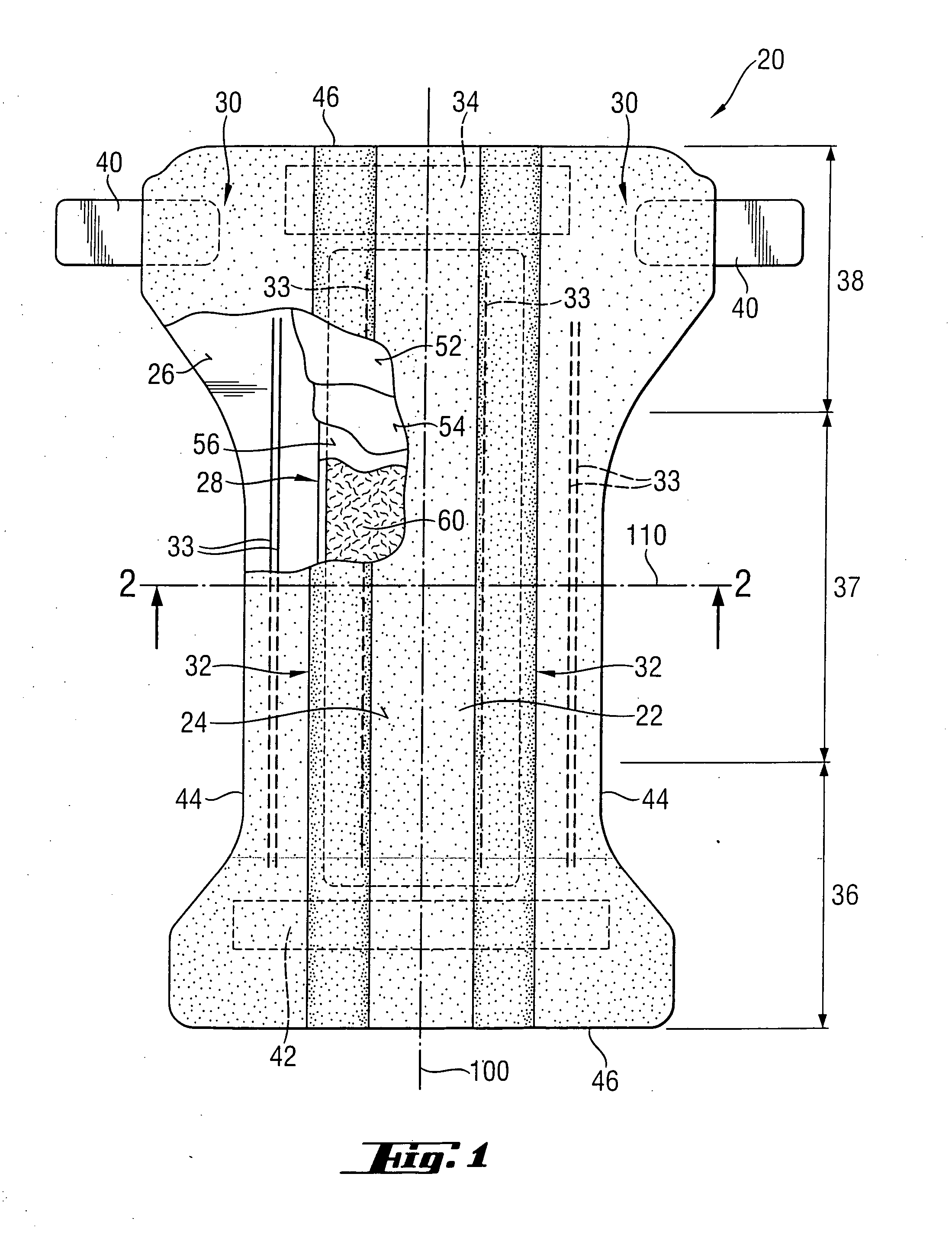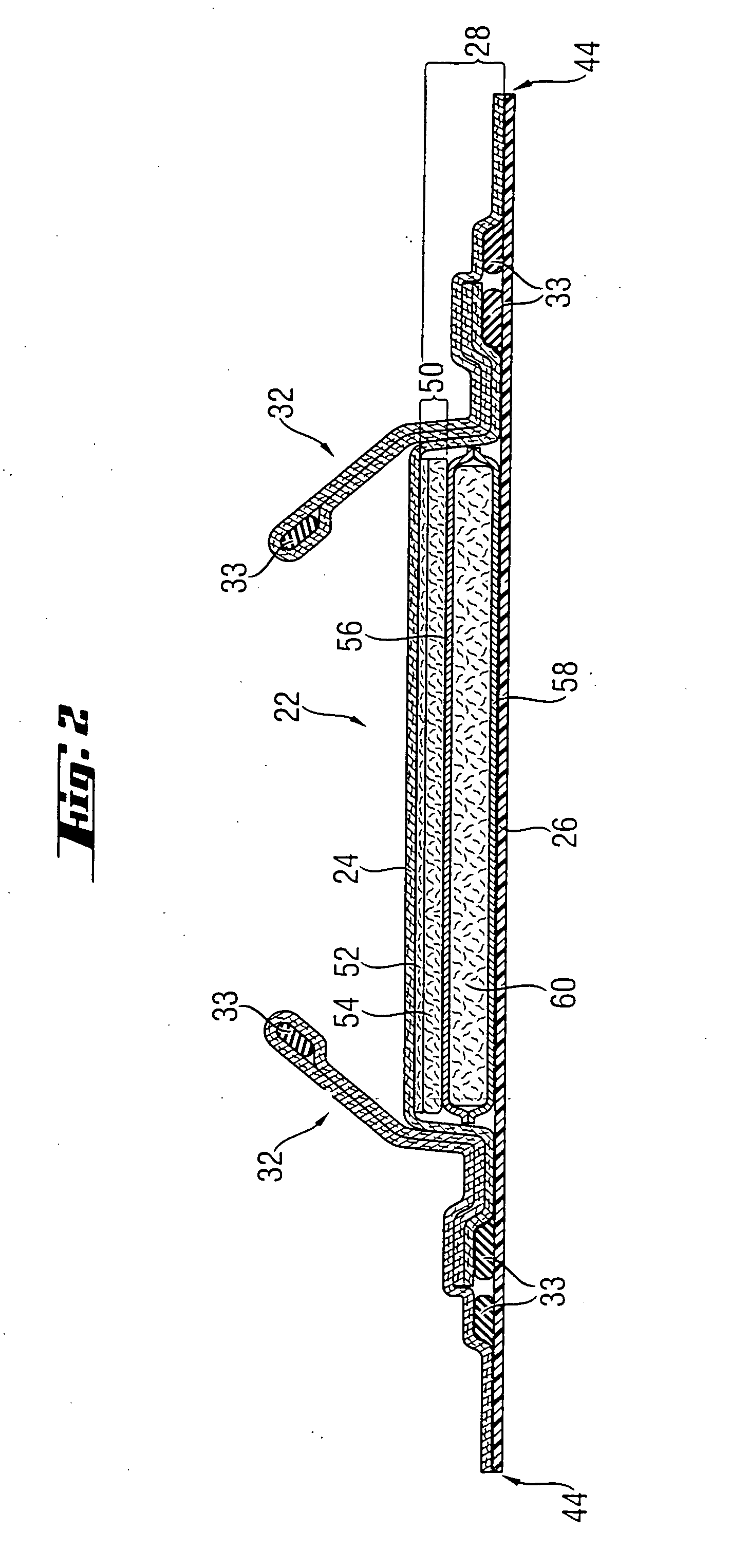Absorbent articles comprising super absorbent polymer having a substantially non-convalently bonded surface coating
a super absorbent polymer and surface coating technology, applied in the field of absorbent articles, can solve the problems of inability to reduce or even remove fibrous materials commonly applied, and the physical and chemical properties of these saps are significantly different from the requirements
- Summary
- Abstract
- Description
- Claims
- Application Information
AI Technical Summary
Problems solved by technology
Method used
Image
Examples
examples
Examples of SAP According to the Present Invention
1. Preparation of a Base Superabsorbent Polymer
[0143] To 300 g of glacial acrylic acid (M), 12.837 g of MethyleneBisAcrylAmide (MBAA) is added and allowed to dissolve at ambient temperature. A 2500 mL resin kettle (equipped with a four-necked glass cover closed with septa, suited for the introduction of a thermometer, syringe needles, and optionally a mechanical stirrer) is charged with this acrylic acid / crosslinker solution. A magnetic stirrer, capable of mixing the whole content, is added. 1166.8 g water are then added (the concentration of AA is 20 w / w-%). Most of the water is added to the resin kettle, and the mixture is stirred until the monomer and water are well mixed. 300 mg of the initiator (“V50” from Waco Chemicals) are dissolved in 20 mL of deionized water. Then, the initiator solution is added together with any remaining water. The resin kettle is closed, and a pressure relief is provided e.g. by puncturing two syring...
examples b to d
, F to H and K
[0150] A 1 L plastic beaker is charged with 50 g of dry SAP particles. The partially hydrolyzed cationic polymer of the hydrolysation levels of 30% (for example B), 50% (for examples C, F, G, H and K) and >90% (for example D), respectively, are added (respectively, Lupamin 9030, Luredur 8097, Lupamin 9095 from BASF) Pt 0.5 w % (e.g., 2.5 g of coating solution with 10% cationic polymer content) over about 2 minutes while mixing by a conventional cooking mixer at ambient temperature. The adding amount of the cationic polymer are adjusted accordingly to meet different add on levels of 0.1 w % (for example F), 1.0 w % (for example G) and 5.0 w % (for examples B, C, D, H and K), respectively, based on the cationic polymer content of the coating solution. The resulting material is transferred into a glass petri-dish and sticked particles are disassembled. The coated SAP particles are further dried in the oven at 60° C. over night (about 16 hours). Any large agglomerates may ...
example e
[0151] A 1 L plastic beaker is charged with 40 g of dry SAP particles. PEI (polyethyleneimine, MW 750,000 from Aldrich Chemicals, Milwaukee, Wis., USA) is added at 0.4 w % (e.g., 0.78 g of coating solution with 50% cationic polymer content) over about 2 minutes while mixing by a conventional cooking mixer at ambient temperature. The resulting material is transferred into a glass petri-dish and sticked particles are disassembled. The coated SAP particles are further dried in the oven at 60° C. over night (about 16 hours). Any large agglomerates may be carefully broken. The resulting coated SAP particles may then be sieved to the desired particle size, e.g. 150-850 μm.
TABLE 1SamplesSAP particle size of all samples: 150 μm-850 umCross-Add-onlinkinglevel ofSamplelevelcoatingCCRCNo:SAP particles[mol %][w %][g / g]ABase polymer without coating and2.0none17.0without surface cross-linking(comparative Example)BBase polymer with PVFA / PVAm2.00.516.5coating30 mol % hydrolysation degreewithout s...
PUM
| Property | Measurement | Unit |
|---|---|---|
| Fraction | aaaaa | aaaaa |
| Fraction | aaaaa | aaaaa |
| Percent by mass | aaaaa | aaaaa |
Abstract
Description
Claims
Application Information
 Login to View More
Login to View More - R&D
- Intellectual Property
- Life Sciences
- Materials
- Tech Scout
- Unparalleled Data Quality
- Higher Quality Content
- 60% Fewer Hallucinations
Browse by: Latest US Patents, China's latest patents, Technical Efficacy Thesaurus, Application Domain, Technology Topic, Popular Technical Reports.
© 2025 PatSnap. All rights reserved.Legal|Privacy policy|Modern Slavery Act Transparency Statement|Sitemap|About US| Contact US: help@patsnap.com



